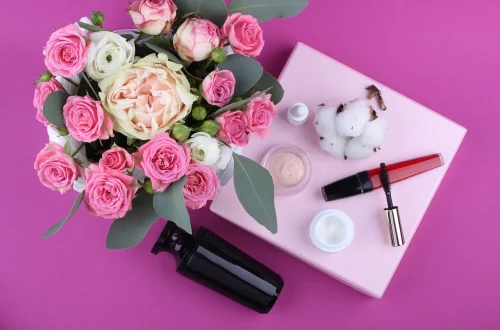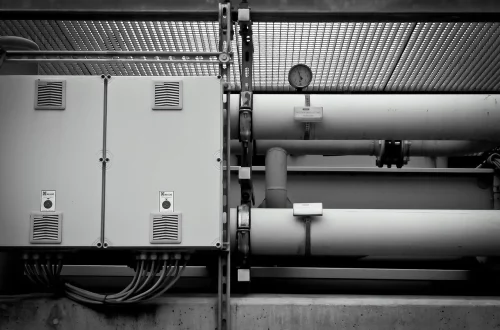
Essential Guide to Choosing a Canopy Humidifier Filter for Your Home
Maintaining the right humidity level in your home is crucial for ensuring comfort and preserving the integrity of your living space. Too little humidity can lead to dry skin, respiratory issues, and damage to wooden furniture and structures. On the other hand, excessive humidity can create a breeding ground for mold and mildew, which can pose health risks and cause structural damage. A canopy humidifier is an effective way to regulate humidity levels, but its efficiency largely depends on the quality and suitability of the filter used.
Choosing the right filter for your humidifier can seem daunting, given the myriad options available on the market. Factors such as filter type, material, and maintenance play a significant role in determining the overall effectiveness of your humidifier. Additionally, understanding the unique needs of your home environment—such as the size of your space, the existing humidity levels, and any specific health concerns—can help guide your decision. Investing in a quality filter not only enhances the performance of your humidifier but also prolongs its lifespan, ensuring you get the most out of your investment.
In this guide, we will explore the essential aspects of selecting a canopy humidifier filter that best suits your needs, providing you with the knowledge necessary to make an informed decision.
Understanding Different Types of Humidifier Filters
When it comes to canopy humidifier filters, there are several types to choose from, each with distinct features and benefits. The most common types include evaporative, ultrasonic, and steam humidifier filters. Understanding these differences can help you determine which filter best suits your humidification needs.
Evaporative filters are the most traditional type and function by absorbing water from the humidifier’s reservoir. As air passes through the wet filter, moisture is released into the air. These filters are effective at providing consistent humidity levels and are self-regulating; they automatically adjust to the moisture level in the room. However, they do require regular cleaning and replacement to prevent mold growth and maintain their effectiveness.
Ultrasonic humidifier filters use high-frequency sound vibrations to create a fine mist of water droplets, which is then released into the air. These filters are typically quieter than evaporative ones and can be more energy-efficient. However, they can also produce mineral dust if the water used is not distilled, leading to potential air quality issues. To mitigate this, it’s advisable to use distilled or demineralized water and regularly clean the unit to prevent buildup.
Steam humidifiers, also known as vaporizers, boil water to create steam, which is then cooled before being released into the room. These filters are effective at reducing bacteria and germs in the air, making them a good choice for those concerned about air quality. However, they can be more energy-intensive and may require more frequent maintenance.
Choosing the right type of filter depends on your individual needs and preferences, including your budget, noise tolerance, and maintenance willingness. Understanding these distinctions will guide you in selecting the optimal filter for your canopy humidifier.
Factors to Consider When Selecting a Filter
Selecting the ideal canopy humidifier filter involves considering several key factors. One of the primary considerations is the size and capacity of your humidifier. Filters are often designed to work with specific models, so checking compatibility is essential. Using a filter that is not designed for your specific humidifier can lead to decreased performance and potential damage to the unit.
Another important factor is the material of the filter. Common materials include paper, foam, and activated carbon. Paper filters are typically more affordable but may require more frequent replacements. Foam filters are reusable and can be washed, making them a more eco-friendly option. Activated carbon filters are excellent for reducing odors and impurities in the air, but they can be more expensive. Assessing the materials and their benefits will help you make a more informed choice.
The frequency of maintenance is also a critical aspect to consider. Some filters require regular cleaning or replacement, while others are designed to last longer with minimal upkeep. If you lead a busy lifestyle, you may prefer a filter that requires less maintenance. On the other hand, if you are diligent about cleaning, you might opt for a filter that offers better performance at the cost of more frequent upkeep.
Additionally, consider your specific health needs. If you or someone in your household suffers from allergies or respiratory issues, look for filters that can effectively trap allergens and improve air quality. Some filters are specifically designed for this purpose and can significantly enhance your indoor environment.
Taking these factors into account will ensure you choose a filter that not only meets your humidification needs but also fits seamlessly into your lifestyle.
The Importance of Regular Maintenance and Replacement
Regular maintenance and timely replacement of your humidifier filter are crucial for optimal performance and longevity. Neglecting these aspects can lead to a host of issues, including decreased humidity levels, poor air quality, and even damage to the humidifier itself.
One of the primary reasons for regular maintenance is to prevent mold and bacteria growth. In a humid environment, stagnant water can quickly become a breeding ground for harmful microorganisms. Cleaning the humidifier and replacing the filter as recommended by the manufacturer can significantly reduce this risk. A clean humidifier not only ensures better air quality but also enhances the unit’s effectiveness in maintaining desired humidity levels.
It’s also essential to monitor the filter’s condition. Most filters will show signs of wear and tear over time, such as discoloration or a decrease in moisture output. Regularly checking your filter will help you determine when it’s time for a replacement. Some filters are designed to last longer than others, and understanding the expected lifespan of your specific filter can help you plan accordingly.
In addition to health and hygiene concerns, maintaining your humidifier can save you money in the long run. A well-maintained unit operates more efficiently, which can lead to lower energy bills. Moreover, preventing damage caused by neglect can save you from costly repairs or replacements down the line.
Establishing a regular maintenance schedule and adhering to it will ensure your canopy humidifier remains in excellent working condition, providing you with the comfort and air quality you seek.
Tips for Enhancing Humidity Control in Your Home
Achieving optimal humidity levels in your home goes beyond simply selecting the right canopy humidifier filter. There are several additional strategies you can implement to enhance your humidity control and create a more comfortable living environment.
Firstly, consider the placement of your humidifier. Positioning it in a central location can help distribute moisture evenly throughout the room. Avoid placing it near walls or corners, as this can lead to uneven humidity levels and potential damage to surfaces. Moreover, keeping the humidifier away from direct sunlight can prevent excessive evaporation and ensure it operates efficiently.
Another effective way to manage humidity is by monitoring indoor humidity levels with a hygrometer. This tool measures the moisture content in the air and can help you determine if you need to adjust your humidifier settings. Ideally, indoor humidity levels should be maintained between 30% and 50% for optimal comfort and health.
Incorporating houseplants into your home can also naturally enhance humidity levels. Plants release moisture through a process called transpiration, which can help increase humidity in dry indoor environments. Some popular houseplants known for their humidity-boosting properties include peace lilies, spider plants, and Boston ferns.
Finally, consider using additional methods to complement your humidifier, such as boiling water on the stove or taking hot showers to introduce moisture into the air. These practices can be particularly beneficial during dry winter months when indoor humidity tends to drop.
By following these tips in conjunction with selecting the right humidifier filter, you can create a more comfortable and healthy living environment for you and your family.
In conclusion, choosing the right canopy humidifier filter is a vital step in maintaining optimal humidity levels in your home. Understanding the different types of filters, considering key factors for selection, and committing to regular maintenance are all essential elements in ensuring your humidifier operates efficiently.
**Disclaimer:** This article is not intended as medical advice. For any health concerns or issues, please consult a qualified healthcare professional.




